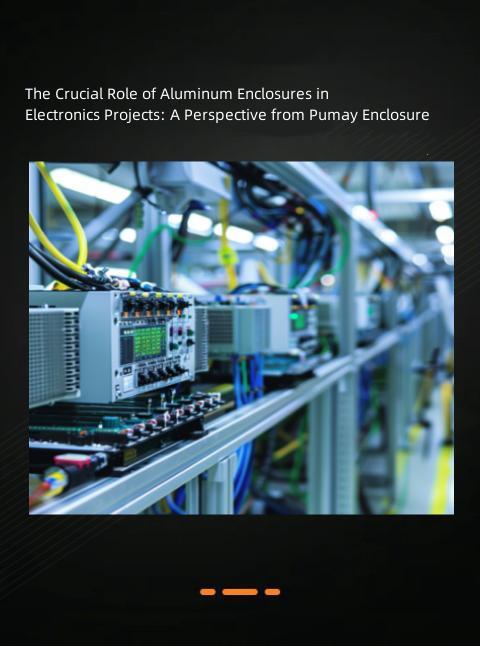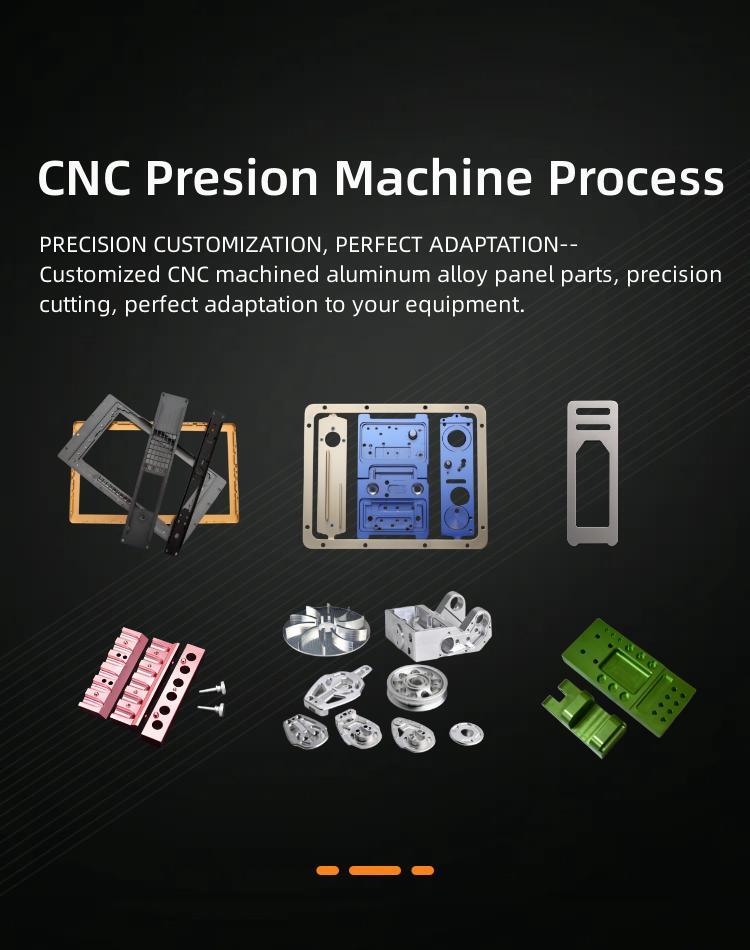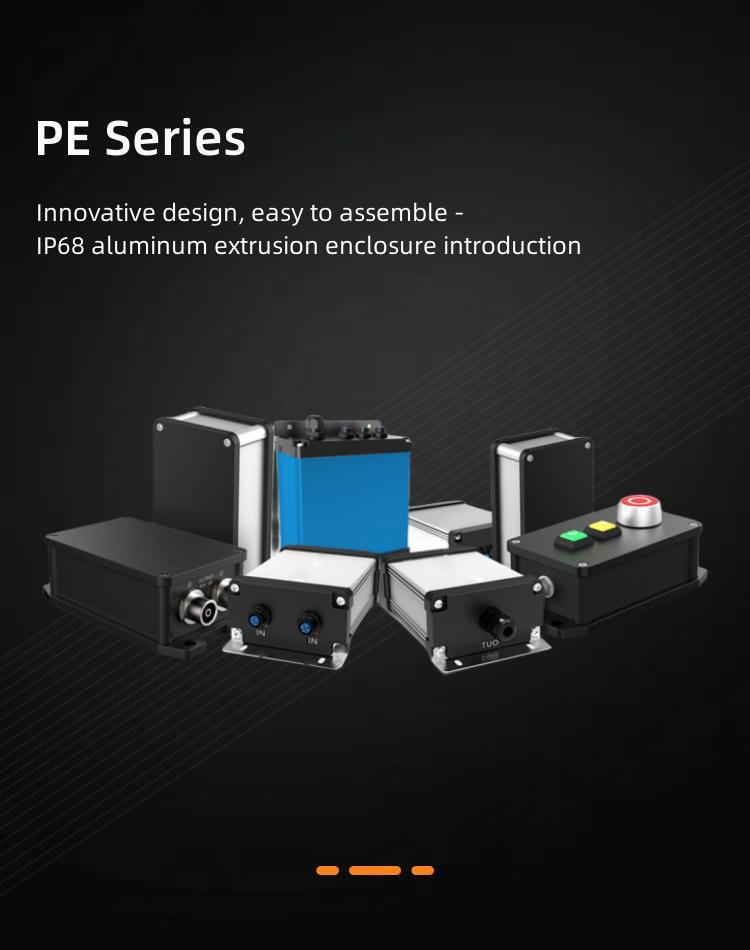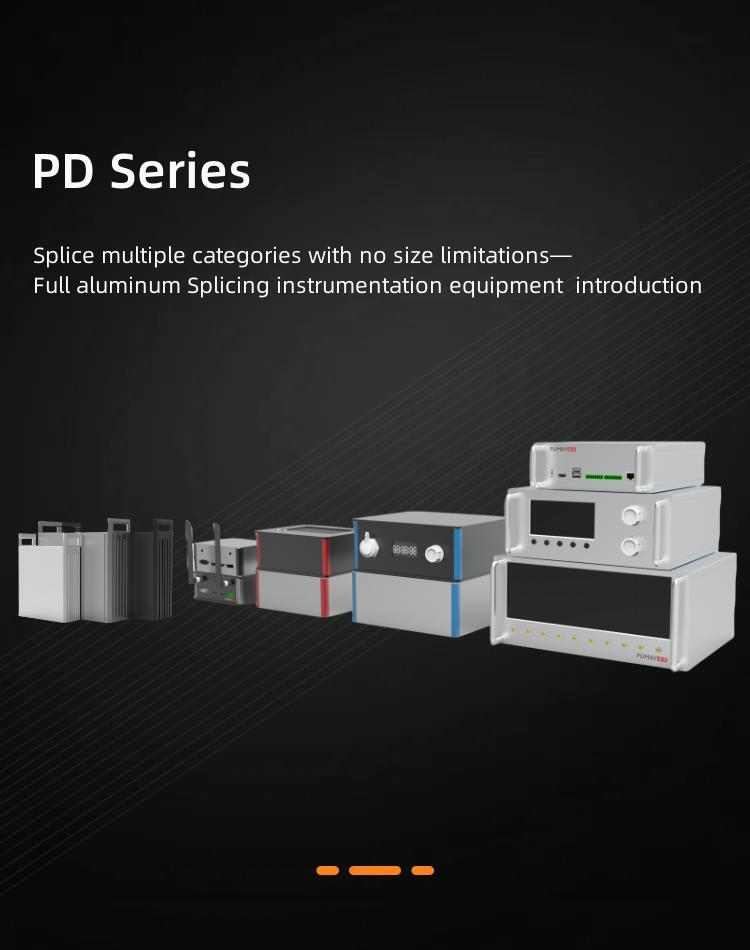Aluminum profile enclosure features and advantages mainly include the following points:
First, lightweight: the aluminum enclosure is relatively light compared to other metal materials, has a lower density, can reduce the weight of the entire equipment, easy to carry and install. Especially for some mobile equipment or need to hang the installation of equipment, aluminum enclosure lightweight performance is very important.
Second, high strength: aluminum enclosure has high strength and hardness, and can effectively protect the safety of internal equipment and components. Compared with plastic shells, aluminum shells can withstand external impact and extrusion, effectively preventing equipment damage.
The strength of aluminum extrusions can be measured by tensile strength and yield strength. The following are some common aluminum profile strength values of the reference range:
1, tensile strength: usually, the tensile strength of common aluminum alloy profiles can reach 200 to 500 MPa (MPa). The specific value depends on the composition and treatment state of the aluminum alloy. For example, the commonly used 6061 aluminum alloy has a tensile strength of about 241 MPa. 6063 Aluminum Alloy Tensile Strength: Normally, the tensile strength of 6063 aluminum alloy is about 145 to 186 MPa.
2, Yield strength: aluminum yield strength is usually slightly lower than the tensile strength, generally between 100 and 400 MPa. Commonly used yield strength: 6063 aluminum alloy yield strength is generally between 90 to 160 MPa. Similar to tensile strength, yield strength is affected by the composition and treatment state of the aluminum alloy.
It should be noted that different aluminum alloy profiles have different strength characteristics and may be affected by stress and strain during use. Therefore, in specific applications, appropriate aluminum profiles and alloys need to be selected according to the actual situation. In addition, in order to ensure safety, but also needs to be based on specific application scenarios and design requirements for strength calculations and structural design.
Third, corrosion resistance: aluminum shell has good corrosion resistance, able to resist the erosion of most chemical substances. Especially in some harsh environments, such as high temperature, high humidity, acid and alkali environments, aluminum shell can maintain good stability and extend the service life of the shell.
1, 6063 aluminum alloy: 6063 aluminum alloy has good corrosion resistance, suitable for indoor and general outdoor environment. It is resistant to corrosion in most common atmospheric and aqueous environments, including humid climates, mildly acidic and alkaline conditions, and weathering. However, in extreme corrosive environments, such as salt water and high chloride content, the corrosion resistance of 6063 aluminum alloy may be affected to some degree.
2, 6061 Aluminum Alloy: 6061 Aluminum Alloy has high corrosion resistance and is suitable for a wider range of application scenarios. It resists corrosion in most common atmospheric and aqueous environments, including humid climates, mildly acidic and alkaline conditions, and weathering. Compared to 6063 aluminum alloy, 6061 aluminum alloy has better corrosion resistance, especially in salt water and high chloride content.
Fourth, good heat dissipation: aluminum shell has good heat dissipation performance, can effectively disseminate the heat generated inside the equipment. Aluminum's excellent thermal conductivity, can quickly conduct heat to the shell surface, through natural or forced ventilation way out, to maintain the normal operation of the equipment.
Commonly used 6061 aluminum alloy and 6063 aluminum alloy parameters for your reference
1, thermal conductivity: the thermal conductivity of 6063 aluminum alloy is about 166-201 W/(m-K), while the thermal conductivity of 6061 aluminum alloy is about 151-202 W/(m-K). It can be seen that the difference between the two thermal conductivity is not large, both show better thermal conductivity performance.
2, thermal conductivity: the thermal conductivity of 6063 aluminum alloy is 0.205-0.215 cal/(cm-s-°C), while the thermal conductivity of 6061 aluminum alloy is 0.23 cal/(cm-s-°C). Thermal conductivity is an indicator that describes the material's ability to transfer heat, which indicates that 6061 aluminum alloy is relatively higher in heat transfer.
3, component design: 6063 aluminum alloy is commonly used in the production of heat sinks, heat sinks and other heat dissipation components, its appearance is more beautiful, suitable for indoor and general outdoor environment. While 6061 aluminum alloy is commonly used in high-power electronic equipment cooling, automotive parts and other occasions, it has a higher strength and thermal conductivity, suitable for more demanding heat dissipation requirements.
4, heat dissipation design: for applications with high heat dissipation requirements, you can increase the heat dissipation area and improve the heat dissipation effect by adding heat sinks, fins and other structures.
It should be noted that the specific heat dissipation parameters are also affected by the shape of the aluminum profile, thickness, surface treatment and other factors. In practical application, you can choose the appropriate aluminum alloy profile according to specific needs, and conduct thermal design and testing to ensure that the heat dissipation requirements are met.
Fifth, dustproof and waterproof: Aluminum enclosure has good sealing performance, which can effectively prevent dust and moisture from entering the equipment, and protect the normal operation of the equipment. Through the use of sealing tape, gasket and other materials, aluminum enclosure can achieve a high level of dustproof and waterproof to meet the needs of different environments.
The waterproof and dustproof standard of aluminum enclosure is mainly related to its application areas and requirements. The following are some common standards:
1, IP rating: IP (Ingress Protection) rating is an international standard for measuring the level of protection of equipment. It consists of two numbers, the first number indicates the dust protection level, and the second number indicates the waterproof level. For example, IP65 indicates a dust protection rating of 6 (fully dustproof) and a waterproof rating of 5 (water spray resistant).
2、MIL-STD-810:This is a series of test standards developed by the U.S. military for evaluating the durability of equipment under different environmental conditions. It includes dustproof and waterproof tests.
3, NEMA rating: NEMA (National Electrical Manufacturers Association) is the U.S. Electrical Manufacturers Association, they have developed a series of standards for equipment enclosures, including dustproof and waterproof rating. For example, NEMA 4 indicates that it is suitable for outdoor environments and can prevent rain and sprays from entering.
You need to choose the appropriate water and dust resistance standard for your specific application. In general, if an aluminum enclosure needs to be highly waterproof and dustproof, you can choose a product with a high IP rating or one that meets MIL-STD-810 or NEMA ratings. At the same time, in the design and manufacture of waterproof and dustproof enclosure, you also need to consider the sealing performance, seam treatment, waterproof sealant and other factors to ensure effective waterproof and dustproof effect.
Sixth, good processability: Aluminum profile enclosure has good plasticity and processability, and can be processed in a variety of shapes and sizes as needed. Aluminum profiles can be easily cut, stamping, welding, bending, and other processing techniques to adapt to the needs of a variety of complex shell.
The good processability of the aluminum profile shell is mainly reflected in the following aspects:
1, plasticity: Aluminum alloy has a high degree of plasticity, can be extruded, tensile, stamping and other processing processes, Aluminum extrusion into a variety of shapes and sizes of shell. Aluminum profiles can be deformed and molded relatively easily to adapt to complex design requirements.
2, Processing performance: Aluminum alloy has good cutting performance, can be processed through milling, drilling, cutting and other machining processes. Aluminum profiles have less cutting tool consumption and faster processing speed, which helps to improve productivity.
3, Welding performance: Aluminum alloy has good welding performance, and can be processed through argon arc welding, laser welding and other welding processes. The welded joints of aluminum profiles have high strength and beautiful welds, which are suitable for manufacturing large aluminum profile shells.
4, Surface treatment: The aluminum profile shell can be a variety of surface treatments, such as anodic oxidation, spraying, electrophoretic coating, etc., in order to improve the appearance of quality and corrosion resistance.
Measurement of aluminum profile shell processing performance standards are mainly the following aspects:
1, formability: including the plasticity of aluminum profiles and processing performance, that is, through the processing technology can be formed into a complex shell shape of aluminum profiles.
2, welding performance: including the strength of the welded joints and the quality of the weld, as well as the thermal impact of the welding process on the aluminum profile.
3, surface treatment performance: including aluminum profile shell surface flatness, finish, and paint adhesion.
4, processing efficiency: including processing speed, cutting tool life, equipment utilization, etc., and whether it can meet the needs of mass production.
With comprehensive consideration of the above factors, you can assess whether the machining performance of aluminum enclosures is good.
Seven, beautiful and generous: aluminum profile shell surface smooth and flat, with a high degree of decorative and aesthetic. Aluminum profile shell after anodic oxidation, spraying, and other surface treatment, can present a rich color and texture, suitable for a variety of occasions. The beautiful appearance of the shell not only enhances the overall product image but also increases the user's goodwill.
To sum up, aluminum profile housing has the advantages of being lightweight, high strength, corrosion resistance, good heat dissipation, dustproof and waterproof, good processability and aesthetic appearance. These features and advantages make the aluminum profile enclosure widely used in electronics, machinery, construction and other fields, and has become the preferred enclosure material in many industries.

 The Crucial Role of Aluminum Enclosures in Electronics Projects: A Perspective from Pumay Enclosure
The Crucial Role of Aluminum Enclosures in Electronics Projects: A Perspective from Pumay Enclosure
 Intelligent Aluminum Processing, Efficient Production, Unlimited Creation! -ALuminum CNC Machine Process
Intelligent Aluminum Processing, Efficient Production, Unlimited Creation! -ALuminum CNC Machine Process
 Dive into Excellence with IP68 Aluminum Profile Waterproof Enclosure
Dive into Excellence with IP68 Aluminum Profile Waterproof Enclosure
 Equipment housings, not just appearance! Assembled Aluminum Profile Instrument and Equipment Enclosures
Equipment housings, not just appearance! Assembled Aluminum Profile Instrument and Equipment Enclosures